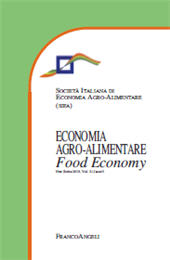The rare, Georgian wine grape in modern enology
809-823 p.
Preserving rare grapes is not just a matter of variety. Recent dna research has shown that unusual and unknown grape varieties provide clues to wine history. During the centuries, 525 Georgian grape varieties had been known but most of them were degenerated. Nowadays, more than 437 rare Georgian vine varieties are preserved in the geo 038 collection of Agricultural Research-Scientific Center, established in 2014 under the Environment Protection and agriculture ministry. Study of the genetic pool of Georgian grape varieties determine the sustainability of the sector and enrichment of the modern wine market. For this reason the studies of the rare aboriginal grape varieties have begun by their ampelography, phenology, chemical, and oeno-caprological characterizes. The aim of this study is to investigate rare, Georgian, aboriginal wine-grapes by their ampelography, chemical and oenolo-caprological characterizes, and to offer different style and aroma wines to the market, enriching the modern wine assortment.
The present study investigated firstly the rare Georgian aboriginal grape variety (Chvitiluri) by its characterizes. In this study grapes caprologycal indication, dynamic development of the sugar accumulation, TA and pH in berries, polyphenols extract in skin and seeds, and phenolic compounds were determined. The grape has been compared with Georgian and French wine-grapes and their products as well. The results show that the grape variety - Chvitiluri, and vinification technique (aging on lee) have the significant impact on the total phenol content in wine. White varietal wine contents high alcohol 13,2%, total phenols 733-500mg/l. Wine has specific, varietal characterizes color, taste, aroma. This study indicates that the rare local, aboriginal variety presents the perspective sort for wine production and can be returned in wine production. [Publisher's text].
Is part of
Economia agro-alimentare : XXI, 3, 2019-
Articles from the same issue (available individually)
-
Information
ISSN: 1972-4802
KEYWORDS
- Georgia, Vitis Vinifera ssp sylvestry, wine, polyphenolics


